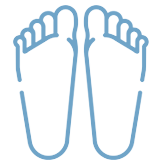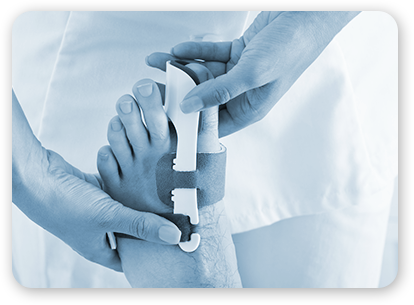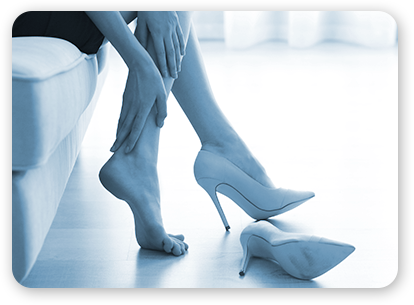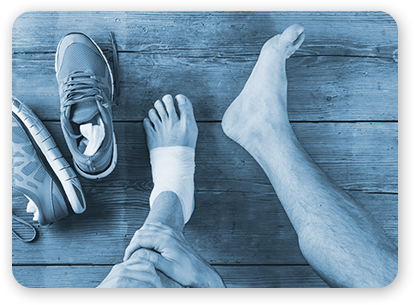What are Bunions (Hallux Valgus) and how can they be treated?
Book a Free Intro call - T: 07500 938115, E: Mrshariff-sec@outlook.com
The Sajid Shariff clinic is the leading, private orthopaedic Kent-based clinic that can help, listen and advise on a wide range of treatments for Bunions (Hallux Valgus). Book a free Intro call with our Medical Secretary to discuss your bunions and treatment options available.
What is a Bunion or Hallux Valgus?

Symptoms of Bunions
In the early stages, a bunion may be completely pain free and not very visible. Over time the bunion may become bigger and noticeable. Some shoes, especially tighter fitting shoe, may rub on the prominence of the bunion producing symptoms:
- Bulging lump on the outside of the big toe
- Swelling and soreness around the big toe
- Ongoing pain
- Limited movement of the big toe
- Difficulty finding shoes that are comfortable and that fit around the lump
- The bunion may in time become inflamed, red and uncomfortable and hurt especially towards the end of the day.
- Specialist footwear, e.g. work boots or ski boots may become a problem.
In the early stages, a bunion may be completely pain free and not very visible. Over time the bunion may become bigger and noticeable. Some shoes, especially tighter fitting shoe, may rub on the prominence of the bunion producing symptoms:
Book a call with one of our team
Find out how we can help you with your Bunions with both non-surgery and surgical treatments. Simply fill in this contact form and our Medical Secretary will be in touch to schedule a time that works for you.Testimonials
Kent’s Holistic Foot & Ankle specialists
The Sajid Shariff clinic is a private orthopaedic clinic based in SE London and Kent that specialises in surgical and non-surgical treatment of foot and ankle conditions including bunions, ankle sprains, plantar fasciitis and achilles tendonitis.

Keep an eye on the shape of your feet; if you see changes see a doctor to find out if there are any recommendations to prevent hallux valgus from forming

Strengthen your feet by exercising them

Wear shoes that fit your feet well and offer good support

Try to avoid shoes that have a heel or pointed toe (sorry stilettos!)
Treatments we offer for bunions
Non Surgical Treatments
Many patients with bunions can manage their symptoms without the need for surgical correction. There are a number of methods that can be helpful.
Changing footwear is key i.e. wearing shoes that are wide around the toes and have a low heel can help to alleviate the symptoms. Physiotherapy and strengthening of the small muscles within the foot can help with symptoms of foot pain in general. Toe spacers can help if there is friction between the toes. Foot splints work to correct alignment, relieve pressure and diminish pain. Splints can help with controlling a bunion or a hammer toe deformity if this is rubbing in footwear. These splints or spacers are not likely to resolve any deformity and are only there to relieve friction symptoms.
Surgical Treatments
Hallux valgus correction is an operation that corrects the bunion deformity. This surgery is only necessary if nonsurgical methods have not worked to relieve the pain.
You will be considered for surgery if:
- The pain affects your everyday life
- You cannot walk for long periods of time
- You can’t straighten or bend your big toe normally
The aim of surgery is to realign the first metatarsal. This is done through an incision on the inner aspect of the foot and the first metatarsal bone is cut and then realigned and fixed with screws (Scarf or Chevron osteotomy). At the same time, a correction of the actual big toe bone may also be required to realign it so that it is more straight (Akin osteotomy). This will also need to be fixed with a staple or a screw. Bunion correction operations are usually performed as a day case procedure and fixing the bone cuts (osteotomies) allows immediate weight bearing in an orthopaedic shoe. After about 6 weeks X-rays are taken and if the bone cuts have healed normal shoes can be worn.
If there is a lot of arthritis within the big toe joint, as well as a bunion, then you may be recommended to have a big toe fusion surgery to straighten the bunion, but also to get rid of the arthritis pain. Very rarely, if the deformity is severe, you may be required to have a fusion operation in the midfoot, known as a lapidus fusion.
Frequently asked questions (FAQs)
Are there any risks with Bunion Surgery?
As with any surgery, there are associated risks. If you are overweight, smoke or not active, you are at greater risk of developing complications after surgery and it may take longer to recover.
Infection: Superficial wound infections are treated by antibiotics and rarely wounds can become more deeply infected and require further surgery.
Stiffness or persistent pain in the foot. In very few cases, nerves may be damaged, which could lead to chronic pain that may be worse than the pain before surgery.
A low risk of a blood clot in the leg or deep vein thrombosis (DVT).
Rarely further surgery may be required if the deformity recurs or the bones don’t unite in the perfect position.
A small number of patients may require further insoles or help from a podiatrist if the foot becomes unbalanced after surgery.
It’s important to remember that most of the complications are minor and can be easily and successfully treated.
How long will I spend in hospital or on treatment after surgery?
Most patients having foot surgery will either go home the same day or spend one night in hospital.
You can expect to be up and active the day after surgery by completing normal everyday tasks such as walking around and getting dressed but you will need to strictly rest and elevate the foot for 10 to 14 days after surgery.
For six weeks after surgery you will have a modified shoe to protect your foot and may need crutches.
It may take up to one year to recover fully from foot surgery and rarely longer.
A very small number of people will continue to experience pain after surgery.
When can I start to drive?
You may start driving again after about six to eight weeks or earlier if you have an automatic car. You must be able to make a safe emergency stop before resuming driving.
Can keyhole (minimally invasive) surgery be performed?
Currently the studies show that there are 2x the number of complications with a keyhole operation than open surgery, these complications include non-union (bone fails to heal) and nerve damage. Such complications are rarely seen with open surgery. Mr Shariff has been on 3 visits to Europe to attend minimally invasive bunion courses and may consider using these techniques when the results improve
What is the cost of Bunion Surgery if I self pay?
The cost of surgery depends on the hospital. Most hospitals offer a package that includes the anaesthetist and surgeons fees as well as the hospital costs.
Results & Next steps
Bunion surgery performed using a set of Scarf and Akin osteotomies is generally successful with outcomes and recovery that are typically predictable. Studies have found:
94% of patients were satisfied with the surgical outcomes
86% of patients experience no footwear restrictions




